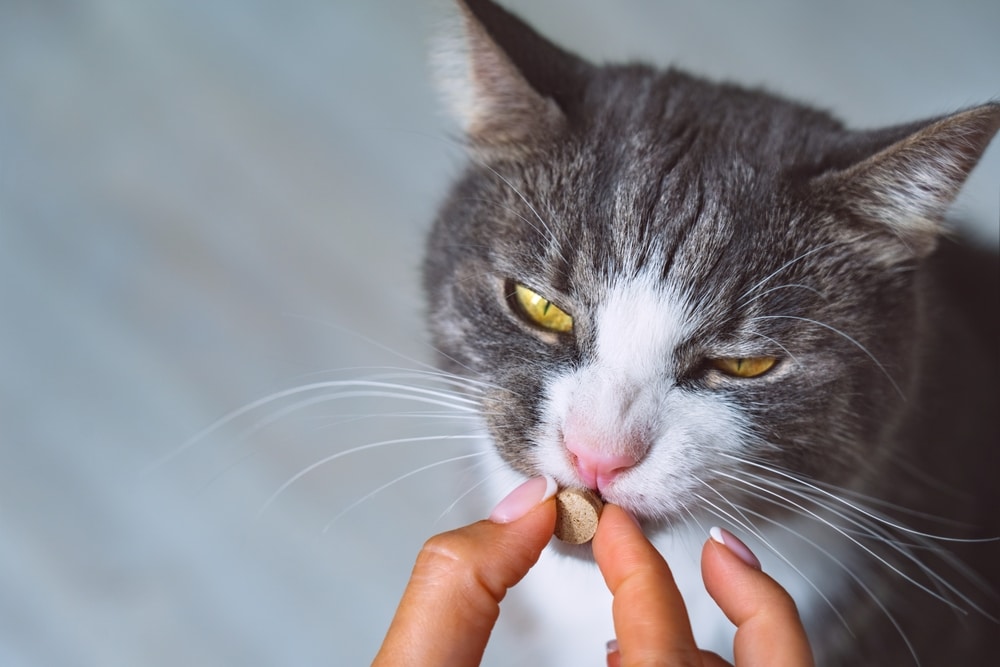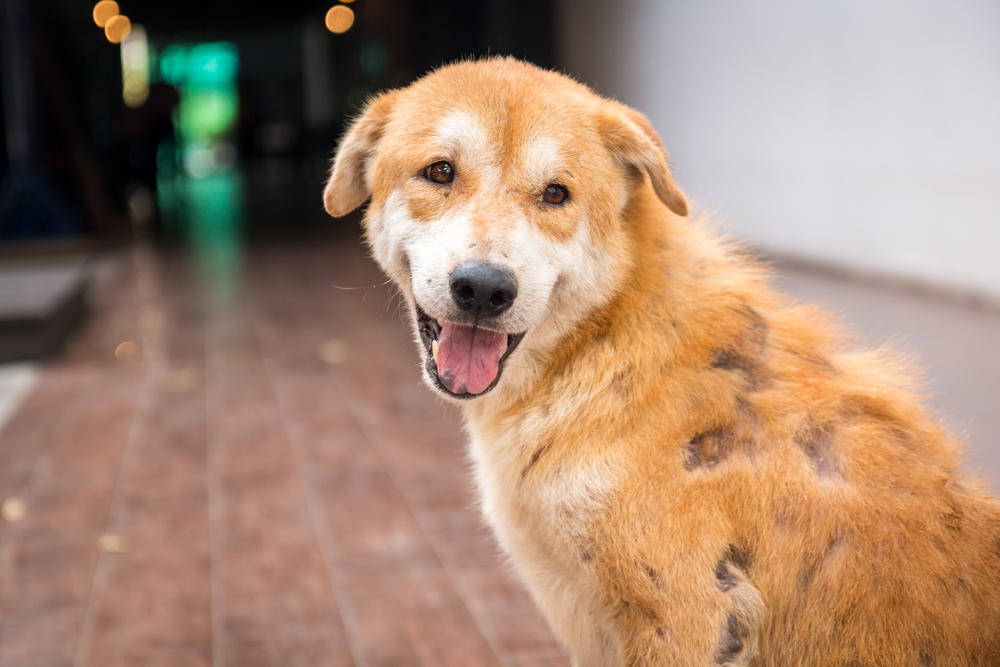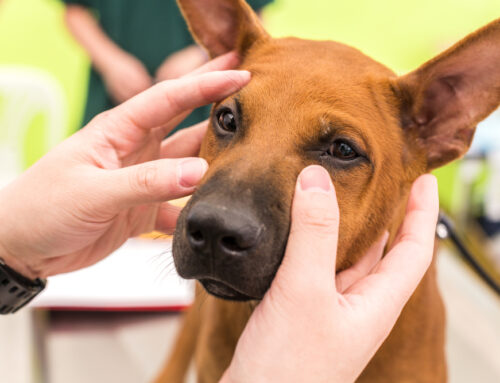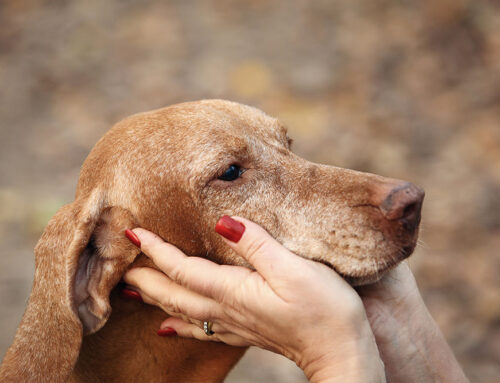Thyroid dysfunction is a common cause for poor health in dogs and cats. When this small but mighty gland becomes diseased, its abnormal processes disrupt the entire body. Fortunately, with a proper diagnosis, the condition can be managed successfully, and pets can enjoy a good quality of life.
The thyroid gland in pets
The thyroid is one of the body’s most influential endocrine glands. Positioned in the neck with a lobe on either side of the larynx (i.e., voice box), the thyroid produces and secretes thyroid hormones—T4 and T3—as directed by the pituitary gland at the base of the brain. Through this hormone production and secretion, the thyroid controls the body’s metabolism. For this reason, the thyroid is often referred to as the body’s thermostat.
When their thyroid function is abnormal, affected pets experience persistently high metabolism (i.e., overactive thyroid or hyperthyroidism) or persistently low metabolism (i.e., underactive thyroid or hypothyroidism). Because thyroid hormones influence nearly every organ in the body, both hyper- and hypothyroidism have widespread consequences.
Thyroid disease in dogs
Hypothyroidism is the predominant form of thyroid disease in dogs, and is caused by direct damage to the gland’s tissues. The reason for the damage is frequently unknown, although inflammation, cancer, and inherited defects can be possible causes.
Once the thyroid tissue is damaged and thyroid hormone production is reduced, affected dogs begin to experience clinical signs. However, because these signs can be mistaken for other problems such as old age, allergies, or increased calorie intake, delayed or incorrect diagnosis may occur. Classic hypothyroidism signs include:
- Weight gain without an increase in appetite
- Hair coat changes (i.e., hair loss, thinning, dullness)
- Thickened skin
- Decreased energy
- Reluctance to exercise
- Depressed or dull attitude
- Cold intolerance (i.e., heat-seeking behavior)
Hypothyroidism is most common among older adult and senior dogs and in mid- to large-sized breeds. Because thyroid disease signs are common to many other health conditions, a complete physical examination and blood work, including a specific test to measure circulating thyroid hormones, are necessary to confirm the diagnosis.
Thyroid disease in cats
In contrast to dogs, hyperthyroidism is the most common dysfunction in cats. With hyperthyroidism, the cat’s thyroid gland is typically enlarged because of a benign tumor, or adenoma. Cancer (i.e., thyroid adenocarcinoma) occurs in less than 2% of hyperthyroid cats.
Hyperthyroidism is most commonly diagnosed in middle-aged and senior cats. Affected cats experience noticeable and progressively worsening signs that reflect their elevated metabolic rate. These include:
- Weight loss despite a ravenous appetite
- Increased thirst and urination
- Anxiety
- Hyperactivity
- Vomiting
- Diarrhea
- Poor hair coat (i.e., thin, greasy, or matted)
- Increased heart and respiratory rate caused by high blood pressure
- Retinal damage
Left untreated, persistent high blood pressure can negatively affect kidney function and heart muscle, causing heart disease. Fortunately, with diagnosis and treatment, the condition can be treated or managed successfully in most cats. And because the overactive thyroid is noticeably enlarged, diagnosis is much more straightforward in cats than it is in dogs.
Thyroid disease management for pets

Thyroid disease management and treatment can vary depending on your pet’s condition and species. After ruling out other medical causes and measuring your pet’s circulating thyroid hormones with blood work, your veterinarian will explain your options, as well as any advantages and disadvantages for each.
- Thyroid disease management for dogs — Canine hypothyroidism is treated with lifelong daily thyroid hormone replacement therapy. Your veterinarian will prescribe an initial dose based on your dog’s size and thyroid results, and will retest them in 30 to 60 days. Visible improvements in your pet’s condition—including weight loss, increased energy, and improved skin and coat—should be noticeable within a few weeks or months. After your dog’s thyroid levels reach normal range, blood work is reduced to twice a year.
- Thyroid disease management in cats — Several options are available to manage or treat feline hyperthyroidism. The choice depends on your cat’s health, their temperament, the severity of the disease, and cost. Options include:
- Medication — Medication to counteract the excess thyroid hormones is given twice daily and can be administered as a pill or topical gel. As with dogs, follow-up blood work is necessary to ensure the correct dosage.
- Surgical removal — The thyroid gland can be surgically removed. However, this option is rarely recommended because the complication rate is high and other therapies are equally successful and safer.
- Radioactive iodine therapy — This advanced treatment involves injecting radioactive iodine into the cat’s bloodstream, where it is absorbed by the damaged thyroid. Once there, targeted radiation is used to destroy the tissue containing the iodine—effectively eliminating the diseased thyroid and leaving the healthy tissue intact. While this treatment can be curative, it is expensive and can only be performed at licensed radiation facilities.
- Diet — Although less common, therapeutic diets containing restricted iodine levels may lower thyroid hormone levels. However, this treatment is generally only used if the others are unavailable.
Learning that your pet has thyroid disease can be alarming, but with diligent care and monitoring, your furry friend can live a relatively symptom-free life. If you’re concerned that your pet may be suffering from thyroid disease, contact Central Kentucky Veterinary Center to schedule an appointment.







Leave A Comment